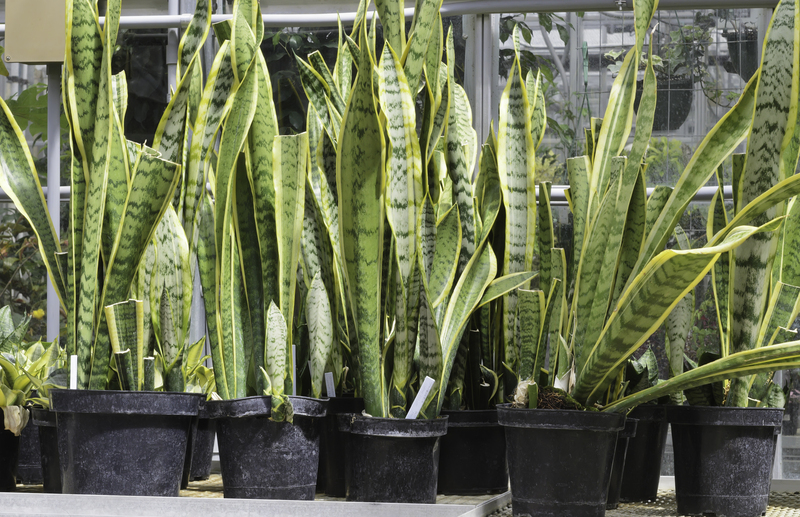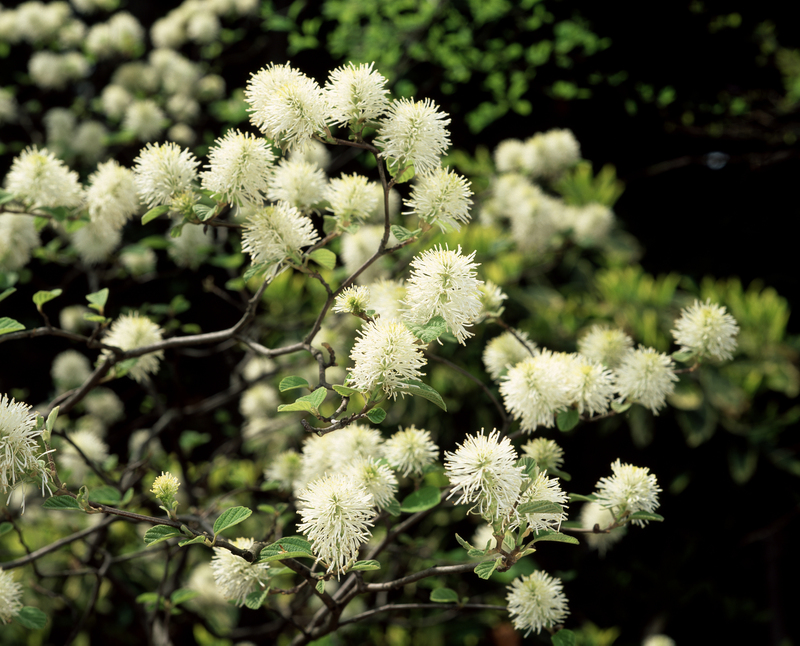Transforming Wilderness: How to Begin Your Garden Makeover
Posted on 26/08/2025
Transforming Wilderness: How to Begin Your Garden Makeover
Are you looking out your window at a patch of untamed land, unruly grass, or a backyard that seems closer to a jungle than the oasis you envision? Transforming wilderness into a beautiful garden may seem overwhelming, but with the right strategy and guidance, you can reinvent your outdoor space into a personal sanctuary. In this comprehensive guide, discover step-by-step instructions, expert tips, and inspiring ideas for beginning your garden makeover, whether it's a subtle upgrade or a complete transformation from wild to wonderful.
Why Consider a Garden Makeover?
Garden transformations go far beyond aesthetics. A thoughtfully undertaken makeover can bring numerous benefits:
- Boosting property value through enhanced curb appeal.
- Creating an outdoor sanctuary for relaxation, entertainment, and connection with nature.
- Improving ecosystem health by encouraging pollinators and biodiversity.
- Fostering sustainability with native plants and efficient watering strategies.
- Personal fulfillment through creative expression and gardening activity.
The journey from wilderness to a curated garden is rewarding and achievable for any homeowner. Read on to explore actionable strategies on kickstarting your garden makeover project!

Assessing Your Wilderness: The First Step
Understanding Your Existing Garden Space
Before you dream up your perfect garden renovation, it's essential to analyze what you have. This will influence your design and planting choices and ensure successful transformation.
- Survey the area: Take photos and notes. Measure the dimensions of your space, noting slopes, shady areas, and existing vegetation.
- Identify problems: Spot invasive plants, poor soil, drainage issues, or dangerous structures like old sheds.
- Understand your sunlight: Track sun exposure throughout the day. This informs plant placement later.
Tip: Create a simple sketch of your plot and mark out problem zones, mature trees, utility lines, and features you want to keep or remove.
Setting Goals for Your Garden Makeover
What do you want your new garden to offer? Clarifying your objectives from the start helps you remain focused and saves time and resources.
- *Is your aim to have a private reading retreat?*
- *Are you hoping for ample space for children or pets to play?*
- *Do you love growing your own vegetables and herbs?*
- *Are low-maintenance plantings a priority for your lifestyle?*
Write your goals down and refer to them as you plan your garden transformation.
Planning Your Garden Transformation
Drawing Ideas and Inspiration
To begin your wilderness garden makeover, gather inspiration:
- Browse garden magazines and books for style ideas and plant combinations.
- Visit local public gardens for native plant inspiration and layout concepts.
- Create a mood board using clippings, colors, and materials you love.
- Explore online resources like Pinterest and Instagram for creative garden design trends.
Choosing a Garden Makeover Style
The style you choose will set the tone for your project and help you make unified choices throughout the process. Popular styles include:
- Cottage garden: Bursting with colorful blooms, informal, and wildlife-friendly.
- Contemporary: Clean lines, sculptural plants, and bold features.
- Wildlife garden: Natives, wildflowers, and habitat-friendly features.
- Edible garden: Vegetable beds, fruit trees, and culinary herbs for farm-to-table freshness.
- Zen garden: Calming, minimalist, emphasizing structure and tranquility.
Blend styles to create a space that's uniquely yours!
Drafting a Garden Layout
With your inspirations in mind, sketch a rough layout. Consider zones or "rooms," such as:
- Seating and entertainment areas
- Pathways and connections
- Play spaces
- Vegetable plots or raised beds
- Feature points (arbor, water feature, sculpture, etc.)
Remember: Circulation, views, and sunlight all influence the layout's effectiveness. Make sure your plan fits your lifestyle and optimizes the garden's best features.
Preparing the Wilderness for a Garden Makeover
Clearing and Cleaning
This is the most labor-intensive phase, but a crucial foundation for your garden transformation effort.
- Remove debris: Collect rubbish, branches, broken pots, and any hazardous materials.
- Cut back overgrowth: Prune or remove unwanted shrubs, trim wild hedges, and mow grass.
- Eradicate weeds: Pull them by hand or use eco-friendly methods (such as boiling water or vinegar sprays for persistent patches). Never compost invasive roots.
- Check for pests: Remove obvious insect nests or evidence of disease to prevent spreading.
Safety tip: Wear gloves, tough clothing, and eye protection. Be vigilant for hidden wildlife!
Soil Improvement and Ground Preparation
Healthy soil is the basis of a thriving garden. After clearing, consider:
- Testing soil pH: Kits are affordable and available at garden centers.
- Add organic matter: Work in compost, leaf mold, or well-rotted manure for structure and nutrients.
- Tilling or aerating: Loosen compact soil, but avoid over-tilling, which can damage structure.
- Mulching: Apply a 2-3 inch layer to suppress returning weeds and conserve moisture.
Investing time in this step pays off handsomely over the life of your garden makeover project.
Designing Your New Dream Garden
Selecting Suitable Plants
For a low-maintenance, flourishing garden, choose plants that match your garden conditions and design preferences:
- Opt for native plants: They are adapted to your climate and soil, attract pollinators, and require less intervention.
- Mix perennials and annuals: Perennials give long-term structure; annuals offer bursts of seasonal color.
- Add trees and shrubs: For privacy, windbreaks, and year-round interest.
- Layer your planting: Place taller plants at the back, stepping down to smaller options at the front.
- Group by water needs: Create "hydrozones" to simplify maintenance.
Tip: Visit local nurseries for advice. They often stock varieties proven to succeed in your region.
Creating Structure with Hardscaping
Hardscaping transforms a wilderness into a liveable garden space. Key hardscape elements include:
- Paths and paving: Guide visitors, keep feet dry, and define garden rooms. Choose materials--like gravel, stone, or brick--that suit your style and budget.
- Decks, patios, terraces: For seating, dining, and socializing. Make sure they're well-positioned for sun or shade as desired.
- Raised beds or retaining walls: Tame slopes or accentuate features.
- Edgers: Keep lawn and garden beds tidy.
- Water features: A pond, fountain, or simple birdbath instantly adds tranquility and attracts wildlife.
Accent Elements and Personal Touches
To truly transform your backyard wilderness into an inviting, personalized garden:
- Add garden art, sculpture, or recycled materials for character.
- Install outdoor lighting to highlight plants, pathways, and focal points for night-time enjoyment.
- Hang bird feeders, bee hotels, or butterfly houses for an eco-friendly boost.
- Consider vertical elements--such as trellises, pergolas, or living walls--to maximize small spaces or add drama.
Planting and Establishing Your New Garden
Timing Your Planting
When to plant varies by climate and plant type:
- Spring: Ideal for most annuals, perennials, and lawns.
- Fall: Excellent for trees, shrubs, and some perennials--roots establish before winter.
- Summer: Good for drought-tolerant species, but supplemental watering is essential.
Planting Steps
- Lay out plants in their pots before digging, to visualize spacing and arrangements.
- Dig holes as deep and twice as wide as the root ball.
- Loosen roots gently before placing in the ground.
- Backfill, press down gently, and water thoroughly.
- Mulch to retain moisture and block weeds.
Patience is key: It may take a full growing season for your transformed garden to reach its full glory.
Caring for Your New Garden
Maintenance Tips for a Lasting Transformation
Even the best garden makeover needs upkeep. Protect your investment with these essential practices:
- Water wisely: Early in the morning. Avoid overwatering, which can promote disease.
- Prune regularly: To encourage healthy growth and remove dead or damaged material.
- Feed your soil: Topdress beds yearly with compost to maintain fertility and structure.
- Weed vigilantly: Mulching helps, but some handwork is inevitable especially at first.
Sustainability tip: Switch to organic fertilizers and mulch for healthier soil and less harm to the ecosystem.
Monitoring and Adapting
Gardens are living, evolving landscapes. Revisit your design each season, noting what works--and what could be better.
- If a plant fails, don't be discouraged. Experiment with replacements.
- Fine-tune features: Move seating to capture light, add shade sails or swap out tired annuals for perennials.
- Celebrate your progress--even small changes add up.
Transforming Wilderness: Before and After Inspiration
To motivate your journey, look at before-and-after examples online or in books. You'll see how others transformed:
- Overgrown backyards into luxurious outdoor living areas
- Unused corners into productive vegetable patches
- Barren plots into lush wildlife havens
Remember: Every masterpiece starts with a vision and one step forward!

Frequently Asked Questions about Garden Makeovers
1. How do I budget for a garden transformation?
- Prioritize must-haves: Start with one area if needed, and gradually expand as budget allows.
- DIY steps: You can clear, plant, and mulch yourself to save costs.
- Invest where it counts: Spend on quality soil, mulch, and key landscape features.
2. Can I transform a garden alone, or should I hire professionals?
- For basic makeovers, most home gardeners succeed solo with the right research and dedication.
- Consider professional help for major grading, stonework, or irrigation installations.
3. How long will my garden makeover take?
- Small areas: A single weekend for clearing, a full season for establishing plants.
- Larger projects: Plan in phases--planning, hardscaping, planting, and refining over a year or more.
4. Which plants are best for transforming wilderness?
- Prioritize heartier, easy-care natives and perennials like lavender, coneflowers, ornamental grasses, sedum, and salvias.
- Talk to local experts for the species best adapted to your region's climate and soil.
Conclusion: From Wild Land to Beautiful Haven
Transforming a wilderness into a dream garden is an exciting, fulfilling journey that anyone can undertake. By assessing your current space, planning with vision, preparing and improving the ground, and building your dream step by step, you'll soon reap the rewards of your garden transformation efforts.
Whether you seek a tranquil retreat, a vibrant area for gatherings, or a thriving wildlife habitat, every effort you put into your garden makeover project will return beauty, enjoyment, and value for years to come. Ready to transform your wilderness? Start today, and grow your own paradise!



